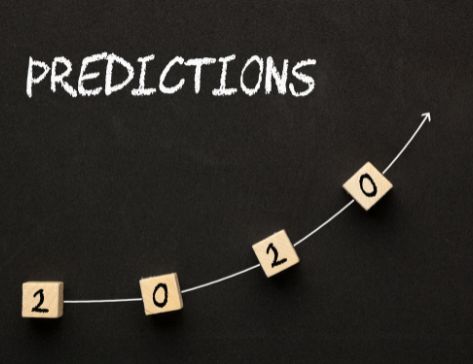
5 Essential Predictive Marketing Metrics You Should Track for Business Growth
Predictive marketing metrics are revolutionizing how businesses approach their marketing strategies in today’s data-driven landscape. By leveraging advanced analytics and machine learning, these metrics enable marketers to anticipate customer behaviors, optimize campaigns, and allocate resources more effectively. Understanding which predictive metrics matter most can significantly impact your marketing ROI and business growth trajectory.

The ability to forecast future outcomes based on historical data gives businesses a competitive edge in an increasingly crowded marketplace. Strategic measurement of these predictive indicators allows marketing teams to move from reactive to proactive approaches, ensuring resources are directed toward the most promising opportunities.
Why Predictive Marketing Metrics Matter
Traditional marketing metrics focus on what has already happened—clicks, conversions, and sales that have already occurred. While these retrospective measurements are valuable, they only tell part of the story. Predictive metrics, on the other hand, help forecast future performance, allowing marketers to make data-driven decisions before investing significant resources.
With predictive analytics, businesses can identify patterns and trends that might otherwise remain hidden. This foresight enables more precise targeting, personalized customer experiences, and optimized marketing spend—all critical factors in today’s competitive business environment.
The 5 Most Valuable Predictive Marketing Metrics
1. Customer Lifetime Value Prediction (CLV)
Customer Lifetime Value prediction is perhaps the most powerful predictive metric available to marketers today. This forward-looking calculation estimates the total revenue a business can reasonably expect from a single customer throughout their relationship with the company.
To effectively track predictive CLV:
- Segment customers based on purchasing patterns and behaviors
- Incorporate recency, frequency, and monetary value (RFM) analysis
- Factor in customer acquisition costs to determine true profitability
- Regularly update models as new data becomes available
By accurately predicting CLV, businesses can make informed decisions about customer acquisition costs, retention strategies, and personalized marketing approaches. Companies that optimize based on CLV typically see 20-30% improvements in customer retention and profitability.
2. Churn Rate Prediction
Predicting which customers are likely to churn before they actually leave allows businesses to implement targeted retention strategies. Big data analysis enables sophisticated churn prediction models that identify at-risk customers based on behavioral signals.
Effective churn prediction requires:
- Monitoring engagement metrics across all customer touchpoints
- Tracking changes in purchase frequency or average order value
- Analyzing customer service interactions for sentiment indicators
- Implementing early warning systems for declining engagement
Research shows that reducing customer churn by just 5% can increase profits by 25-95%, making this predictive metric invaluable for sustainable growth.
3. Lead Scoring and Conversion Probability
Predictive lead scoring uses historical data and machine learning to assign probability scores to leads, indicating their likelihood of converting. This enables sales teams to prioritize high-potential prospects and customize their approach based on conversion probability.
To implement effective predictive lead scoring:
- Analyze demographic, firmographic, and behavioral data points
- Identify patterns among previously converted leads
- Continuously refine models based on new conversion data
- Integrate scoring systems with CRM and marketing automation platforms
Organizations implementing predictive lead scoring typically see 30-40% improvements in conversion rates and significant reductions in sales cycle length.
4. Next Best Action/Offer Prediction
Next best action prediction uses customer data to determine the most effective marketing action for individual customers at specific points in their journey. This could be a product recommendation, content offer, or service upgrade that maximizes engagement and conversion probability.
To leverage next best action predictions:
- Collect comprehensive customer journey data across all touchpoints
- Develop models that account for contextual factors like timing and channel
- Test and refine recommendation algorithms continuously
- Implement real-time decision engines for immediate action
Companies effectively using next best action predictions report 15-25% increases in campaign response rates and significant improvements in customer satisfaction scores.
5. Marketing Channel Attribution and Optimization
Predictive attribution models forecast which marketing channels will deliver the highest ROI for specific customer segments and campaign objectives. Unlike traditional attribution, predictive models can simulate various budget allocation scenarios to optimize future spending.
For effective predictive channel attribution:
- Implement multi-touch attribution tracking across all marketing channels
- Develop models that account for both online and offline interactions
- Consider time-decay factors in the customer journey
- Use machine learning to identify non-obvious channel relationships
Marketers using predictive attribution models typically realize 15-30% improvements in marketing ROI through more efficient budget allocation.
Implementing Predictive Marketing Metrics in Your Strategy
Successfully incorporating predictive metrics into your marketing strategy requires a systematic approach:
Step 1: Audit Your Data Infrastructure
Before implementing predictive analytics, ensure you have the necessary data collection systems in place. This includes customer data platforms, web analytics, CRM systems, and marketing automation tools that can capture and centralize relevant data points.
Step 2: Identify Business-Specific KPIs
While the five metrics above apply to most businesses, your specific industry and business model may benefit from additional predictive indicators. Identify which outcomes most directly impact your business objectives.
Step 3: Start Small and Scale
Begin with one or two predictive metrics that align with your most pressing business challenges. Once you’ve established processes and demonstrated value, expand to additional metrics.
Step 4: Invest in the Right Tools
Depending on your organization’s size and resources, you may need specialized predictive analytics platforms or services. Options range from built-in predictive features in major marketing platforms to dedicated predictive analytics solutions.
Step 5: Develop a Testing Framework
Establish processes for regularly testing and validating your predictive models. This should include comparing predicted outcomes against actual results and refining models accordingly.
Overcoming Common Challenges
Implementing predictive marketing metrics often comes with challenges:
- Data quality issues: Predictive models are only as good as the data feeding them. Establish data governance practices to ensure accuracy and completeness.
- Organizational resistance: Some teams may resist adopting predictive approaches. Demonstrate early wins and provide adequate training to build buy-in.
- Technical complexity: Start with user-friendly tools and consider partnering with analytics specialists for more advanced implementations.
- Integration difficulties: Ensure your predictive insights can be actioned through existing marketing systems and advertising platforms for maximum impact.
Conclusion
Predictive marketing metrics represent the evolution of data-driven marketing, enabling businesses to anticipate customer needs and market changes rather than simply reacting to them. By focusing on Customer Lifetime Value, Churn Prediction, Lead Scoring, Next Best Action, and Channel Attribution, marketers can transform their approach from intuition-based to truly predictive.
As marketing technology continues to advance, the organizations that thrive will be those that effectively harness predictive insights to deliver more relevant, timely, and valuable customer experiences. Start implementing these five essential predictive marketing metrics today to position your business for sustainable growth in an increasingly competitive landscape.


